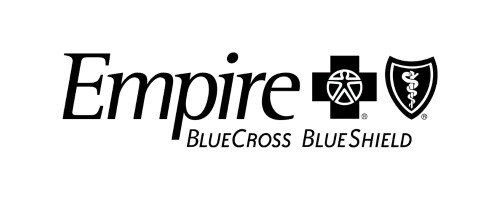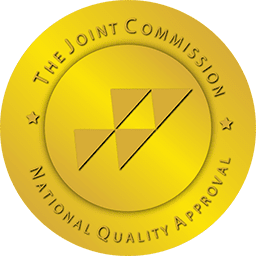The journey of how new drugs are named is both fascinating and complex. It is a meticulous process that ensures each drug’s name is unique, meaningful, and easily distinguishable. This process encompasses several stages, from initial discovery to final approval by regulatory bodies. At its core, drug naming is about more than just picking a name; it involves a blend of science, marketing, and regulatory compliance to ensure the name is safe, effective, and marketable.
When a new drug is discovered, its naming process begins almost immediately. Initially, the drug is assigned a chemical name, which describes its molecular structure and properties. This name, while technically accurate, is often too complex for everyday use. Therefore, a simpler, non-proprietary name, also known as the generic name, is developed. This name is usually derived from the drug’s chemical name and is standardized by international organizations such as the World Health Organization (WHO) and the United States Adopted Names (USAN) Council.
Once the generic name is established, the pharmaceutical company can propose a brand name or trade name. This name must undergo rigorous scrutiny to ensure it does not conflict with existing drug names and is easy for healthcare professionals to remember and prescribe. The proposed brand name is then submitted to regulatory authorities like the FDA in the United States or the EMA in Europe for final approval.
Yes, You Can Get Your Life Back. Contact Absolute Awakenings Today. With our trained and compassionate professionals in your corner, freedom can be yours. All it takes is you choose yourself. Choosing a better tomorrow.
Importance of Drug Naming Standards
The importance of drug naming standards cannot be overstated. These standards play a crucial role in ensuring patient safety, effective communication among healthcare providers, and the overall efficiency of the healthcare system. Without standardized naming conventions, the risk of medication errors would increase significantly, leading to potentially harmful consequences for patients.
One of the key reasons for stringent drug naming standards is to avoid confusion between drugs with similar names. The World Health Organization (WHO) and the United States Adopted Names (USAN) Council have established guidelines to help create names that are distinct and minimize the risk of mix-ups. For example, the generic names of drugs often include specific stems that indicate their pharmacological class, making it easier for healthcare professionals to identify the drug’s function and use.
Moreover, drug naming standards help streamline the process of drug approval and marketing. Regulatory bodies such as the FDA and the EMA require that drug names meet specific criteria before they are approved for use. These criteria include ensuring that the name is not misleading, does not imply unproven efficacy, and is not easily confused with existing drug names. This rigorous review process helps maintain a high standard of safety and efficacy in the pharmaceutical market.
In addition to safety, standardized drug names facilitate better communication and understanding among healthcare providers worldwide. When doctors, pharmacists, and other medical professionals use consistent terminology, it reduces the likelihood of errors and enhances the overall quality of care. In a globalized world where patients often receive treatment from multiple healthcare systems, having a common language for drug names is vital for seamless and effective care.
Regulatory Bodies and Their Roles

Regulatory bodies play a pivotal role in the drug naming process, ensuring that new medications are safe, effective, and properly identified. These organizations are responsible for establishing guidelines and standards for drug naming, as well as reviewing and approving proposed names before they can be marketed.
One of the most influential regulatory bodies is the United States Food and Drug Administration (FDA). The FDA’s Division of Medication Error Prevention and Analysis (DMEPA) is tasked with evaluating drug names to prevent medication errors. This involves assessing the potential for confusion with existing drug names, analyzing the name’s pronunciation, and ensuring that the name does not imply unverified claims about the drug’s efficacy.
The European Medicines Agency (EMA) is another critical regulatory body that oversees drug naming in the European Union. The EMA collaborates with the European Pharmacopoeia Commission to ensure that drug names are distinct, informative, and compliant with European regulations. The agency also conducts rigorous reviews to prevent name-related medication errors, similar to the FDA’s process.
Globally, the World Health Organization (WHO) plays a significant role in the standardization of drug names through its International Nonproprietary Names (INN) program. The INN program aims to provide a unique and universally recognized name for each pharmaceutical substance, facilitating clear communication and reducing the risk of errors. The WHO collaborates with national and regional regulatory bodies to ensure that INN names are adopted and used consistently worldwide.
In addition to these major organizations, numerous other national regulatory bodies contribute to the drug naming process. For instance, the Japanese Pharmacopoeia and Canadian Drug Names Review have their own sets of guidelines and approval processes. By working together, these regulatory bodies ensure that drug names are safe, clear, and consistent, ultimately protecting patients and enhancing global healthcare.
Steps Involved in Naming New Drugs

Naming a new drug is a meticulous process that involves several steps, each designed to ensure the drug’s name is unique, clear, and free from potential errors. This process begins well before the drug reaches the market and involves multiple stakeholders, including pharmaceutical companies, regulatory agencies, and international organizations.
1. Initial Brainstorming and Selection: The process usually starts with a brainstorming session where pharmaceutical companies generate a list of potential names. These names must align with the drug’s chemical composition, therapeutic use, and target market. Names are often created by specialized branding agencies that consider linguistic, cultural, and marketing factors.
2. Preliminary Screening: Once a list of potential names is generated, it undergoes preliminary screening to eliminate any names that might be confusing, difficult to pronounce, or imply unverified benefits. This step also involves checking for trademarks to ensure that the proposed names do not infringe on existing brands.
3. Regulatory Submission: The shortlisted names are then submitted to regulatory bodies such as the FDA, EMA, and WHO. Each regulatory body has its own set of guidelines and criteria for drug names. For example, the FDA focuses heavily on preventing medication errors, while the WHO ensures that the name is unique and universally recognizable.
4. Evaluation and Review: Regulatory agencies conduct a thorough evaluation of the proposed names. This includes phonetic and orthographic analysis to prevent similarity with existing drug names, which could lead to medication errors. The names are also reviewed for any misleading or promotional implications.
5. Public Comment and Feedback: In some cases, regulatory bodies may open the proposed names for public comment. Feedback from healthcare professionals, patients, and other stakeholders is considered to ensure the name is appropriate and effective.
6. Final Approval: Once all evaluations and feedback are completed, the regulatory body grants final approval. The drug is then officially named and can be marketed under its approved name. This final name is included in all official documentation, packaging, and marketing materials.
By following these steps, pharmaceutical companies and regulatory bodies work together to ensure that new drug names are safe, clear, and effective, ultimately benefiting both healthcare professionals and patients.
Challenges in Drug Naming Process

The process of naming new drugs is fraught with challenges, many of which can significantly delay a drug’s entry into the market. These challenges stem from a variety of factors, including regulatory requirements, linguistic considerations, and the need to avoid confusion with existing medications.
Regulatory Hurdles: One of the primary challenges in the drug naming process is meeting the stringent criteria set by regulatory agencies like the FDA, EMA, and WHO. Each of these bodies has its own set of guidelines that must be adhered to, which can sometimes be conflicting. For instance, a name that meets FDA guidelines might not be acceptable to the EMA or WHO, necessitating multiple rounds of revisions and submissions.
Linguistic and Cultural Sensitivity: Another significant challenge is ensuring that the drug name is linguistically appropriate and culturally sensitive. A name that is acceptable in one language or culture might have negative connotations or be difficult to pronounce in another. This requires extensive research and sometimes the involvement of linguistic experts to ensure that the name is universally acceptable.
Trademark Conflicts: The pharmaceutical industry is highly competitive, and many names are already trademarked. Finding a unique name that does not infringe on existing trademarks can be difficult. This often involves thorough searches in multiple trademark databases and can result in the need to abandon a preferred name if it is found to be too similar to an existing trademark.
Preventing Medication Errors: Regulatory bodies place a high emphasis on preventing medication errors, which can arise from similar-sounding or similarly spelled drug names. This necessitates detailed phonetic and orthographic analysis to ensure that the new drug name is distinct from existing names. Even minor similarities can lead to rejection of a proposed name.
Marketing and Branding Considerations: Finally, the name of a drug must also be marketable and align with the branding strategy of the pharmaceutical company. It should be memorable, easy to pronounce, and convey the intended therapeutic benefits without making unverified claims. Balancing these marketing needs with regulatory and linguistic requirements is a complex task.
Despite these challenges, the collaborative efforts of pharmaceutical companies, regulatory bodies, and branding experts ensure that new drug names are safe, effective, and market-ready. Addressing these challenges proactively can streamline the naming process, helping bring new medications to patients more efficiently.
Future Trends in Drug Naming

As the pharmaceutical industry continues to evolve, so too does the process of naming new drugs. Future trends in drug naming are likely to be influenced by advancements in technology, changes in regulatory landscapes, and the increasing globalization of the industry.
Technological Innovations: One of the most exciting trends is the use of artificial intelligence (AI) and machine learning to generate and vet potential drug names. These technologies can analyze vast datasets to identify names that meet regulatory requirements, are culturally appropriate, and avoid trademark conflicts. This can significantly speed up the naming process and increase the likelihood of regulatory approval on the first attempt.
Personalized Medicine: With the rise of personalized medicine, there is a growing trend towards naming drugs that are tailored to specific patient populations or genetic profiles. These names may reflect the personalized nature of the treatment, helping to convey its targeted efficacy and specialized use.
Global Harmonization: As drug markets become increasingly global, there is a trend towards creating names that are universally acceptable across different languages and cultures. This requires a more collaborative approach among international regulatory bodies to harmonize naming guidelines and reduce the need for multiple submissions and approvals.
Patient-Centric Naming: Another emerging trend is the focus on patient-centric naming. This involves creating names that are easy for patients to remember and pronounce, thereby improving medication adherence and reducing the risk of errors. Engaging patients in the naming process through surveys and focus groups can provide valuable insights into what makes a name effective and user-friendly.
Sustainability and Ethical Considerations: As awareness of environmental and ethical issues grows, there is likely to be an increased emphasis on naming drugs in a way that reflects these values. This could involve avoiding names that imply excessive consumption or environmental harm and instead opting for names that convey sustainability and ethical responsibility.
These trends indicate a future where drug naming becomes more efficient, patient-friendly, and globally harmonized. Embracing these changes can help pharmaceutical companies bring new medications to market more quickly and effectively, ultimately improving patient outcomes.
Yes, You Can Get Your Life Back. Contact Absolute Awakenings Today. With our trained and compassionate professionals in your corner, freedom can be yours. All it takes is you choosing yourself. Choosing a better tomorrow.












